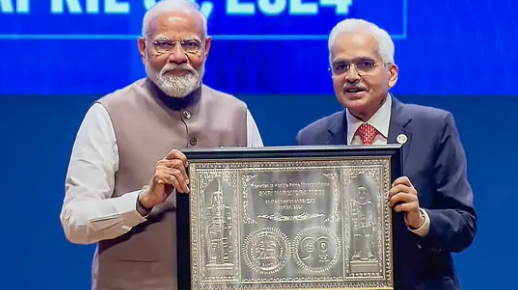RBI at 90 (GS Paper 3, Indian Economy)

Context
- While central banks in developed countries can be traced as far back as the 17th century, among developing countries, the Reserve Bank of India, established on April 1, 1935, is one of the oldest such institutions.
How did RBI come into existence?
- The Reserve Bank of India was established on April 1, 1935 in accordance with the provisions of the Reserve Bank of India Act, 1934.
- The Central Office of the Reserve Bank was initially established in Calcutta but was permanently moved to Mumbai in 1937. The Central Office is where the Governor sits and where policies are formulated.
- Though originally privately owned, since nationalization in 1949, the Reserve Bank is fully owned by the Government of India.
RBI in pre- and post-independence period
- Since it came into existence, it has navigated and managed the several transitions the country has undergone - from a time when the planning process held sway to a more market-oriented economy, and now an increasingly digital economy.
- As it looks towards the next 10 years, the RBI must learn from its past, adjust and adapt, and plan for the challenges it could encounter on its journey towards its centenary.
Record of RBI in the face of challenges
- In the past nine decades, the Indian economy and the RBI have faced many difficult moments.
- In the more recent past, these include the global financial crisis of 2008, the taper tantrum of 2013, demonetization, and the pandemic-induced disruptions to economic activities.
- There was also the issue of bad loans plaguing the banking sector.
- This problem, as the prime minister noted, was tackled by authorities at multiple levels - recognition, resolution, and recapitalization.
- Prodded by the RBI, banks began to recognize the true extent of the problem.
- The IBC framework ushered in by the government provided a more effective mechanism for resolving bad loans.
- Alongside this, the government infused capital into public sector banks.
- As a consequence, bad loans fell from 11.25 percent in 2018 to below 3 percent by September 2023, and credit growth has been healthy.
- The twin balance sheet problem that held back investment activity has been resolved, the PM said.
The new age challenges for RBI
- There have been other significant changes in recent times.
- For one, the central bank has formally adopted inflation targeting.
- This has helped keep inflation in line with the target and anchor expectations, barring some periods marked by the pandemic-induced disruptions.
- The introduction of UPI has revolutionized the payments ecosystem across the country.
- Over the coming years, as the pace of change accelerates further, the central bank must prepare for the many challenges that may come before it - from dealing with changes in payment mechanisms, and the central bank's digital currency, to new sources of risk and ensuring effective regulation and supervision.
Conclusion:
- It must also be mindful of the risks of unforeseen events. An independent central bank plays a critical role in the macroeconomic management of the country. Coordination between monetary and fiscal policies is critical for the economy, and for creating a "Viksit Bharat".


